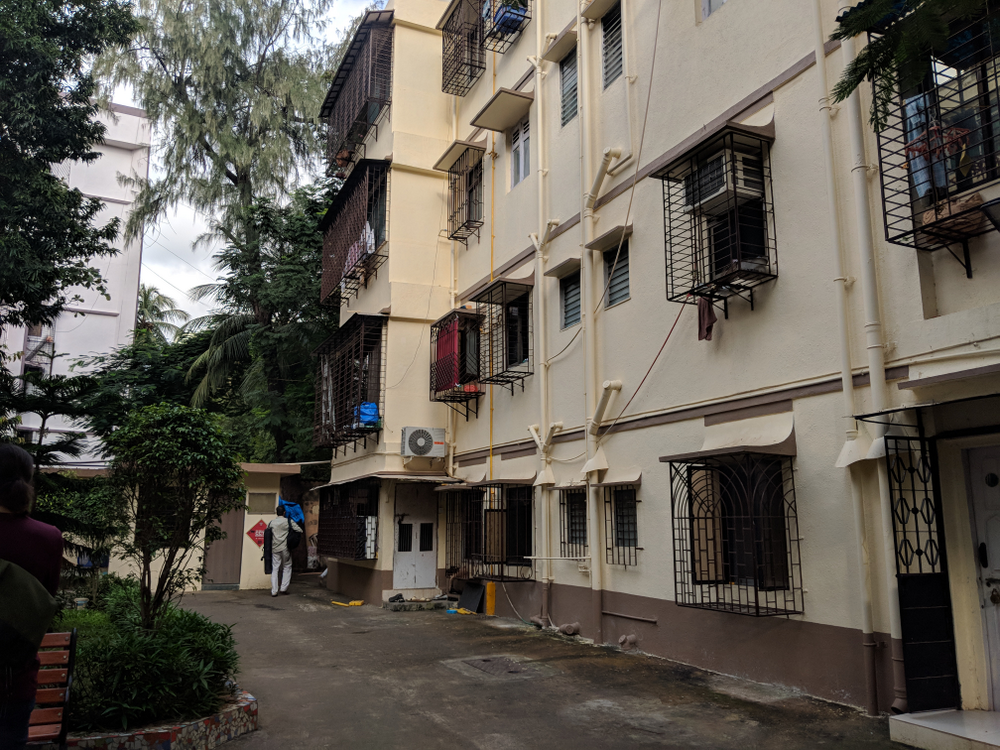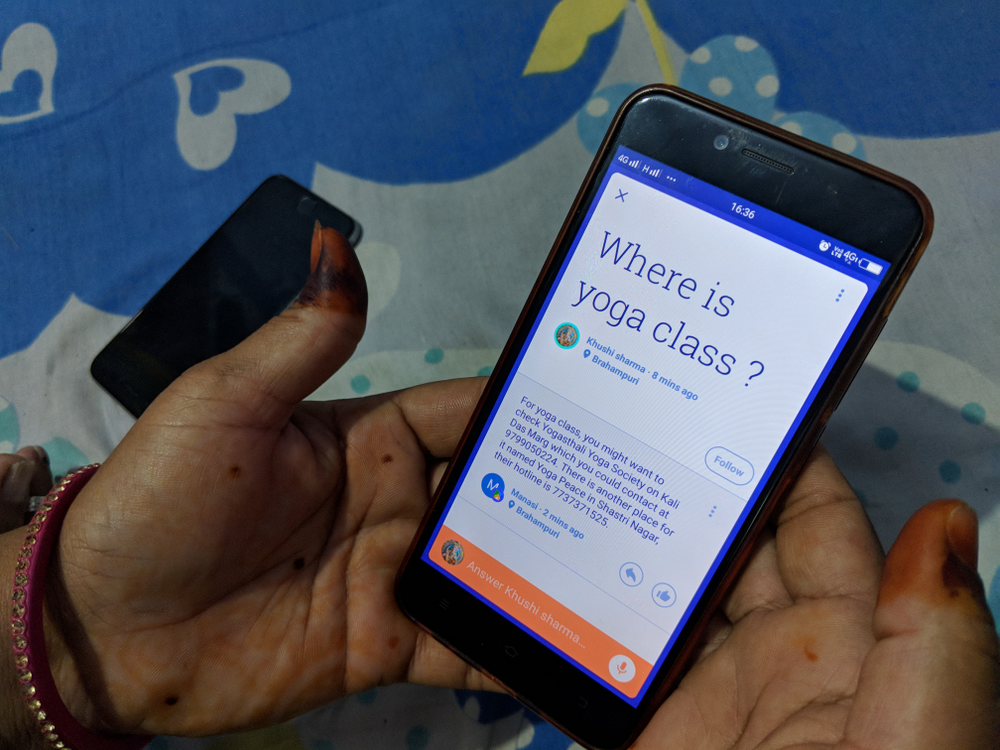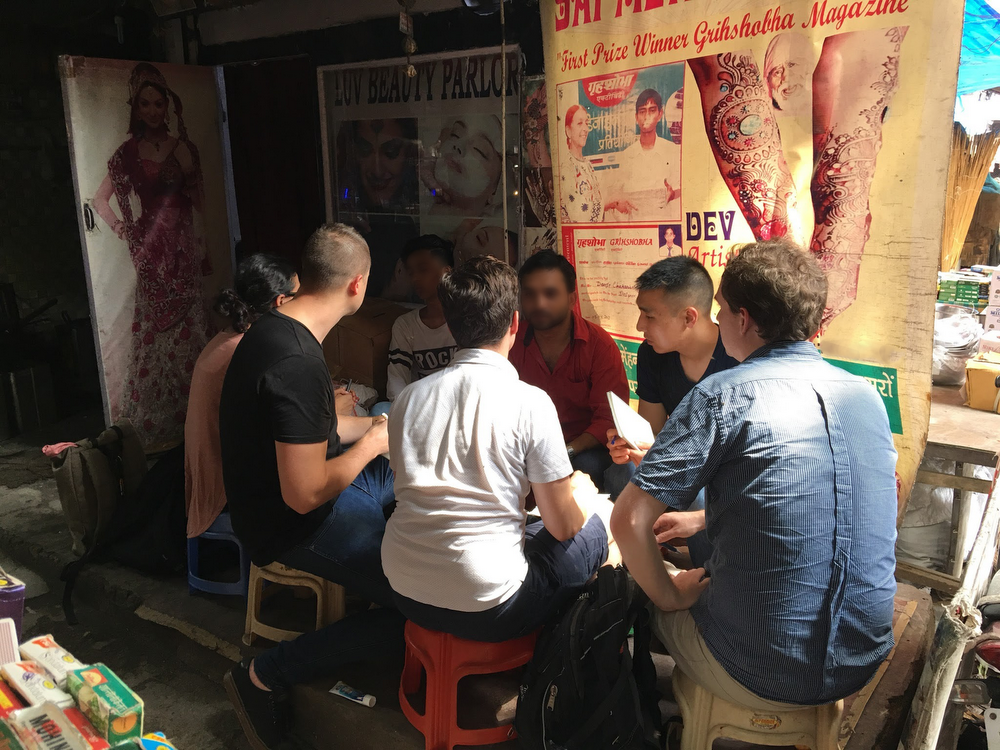Sitting in her apartment in Mumbai a few years ago, Radha wondered if there were activities nearby for her two-year old son. She had recently moved to the city from a small town about 300 km away in search of better education for her children. Since then, she’d slowly built up a network of acquaintances, mostly from chance meetings traveling up and down the lift. But there was something missing. Back in her hometown, it was easy to ask Shanti Aunty across the way about local dressmakers. And—along with the keys to the family cupboard—she had inherited many business relationships from her mother-in-law; the local baker, the nearby mobile repair shop. But in such a big city, finding answers to simple local questions was more difficult.
A kernel of an insight
This kernel of an insight, gathered by Jeannie Foulsham while studying local search in India in 2014, led to the development of a product we call Neighbourly. Neighbourly is a mobile application that provides people with an easy interface to ask and find answers to neighborhood questions and is available in seven cities in India so far. And we built it in direct response to conversations with users like Radha.
This is just one example of how user experience (UX) research can build an understanding of people’s context, behavior, and comprehension to inform the design of products or services. There are hundreds of researchers across Google who gather insights to inform all of our product offerings. This research is especially key to how we approach products for the next billion users—people coming online for the first time, usually on mobile. To ensure we're living up to Google's mission of universally accessible information, we must deeply understand the similarities and differences in how these people look for and use information in their day to day lives.
Diving deeper to understand the role of technology
In the early days of developing Neighbourly, Muzayun Mukhtar, a UX researcher based in our Bangalore office, would spend hours walking the streets of Delhi, Mumbai, Jaipur and many other smaller cities conducting intercept interviews, stopping people for a conversation to get a glimpse into their lives, their impressions and their relationships. She spent time in small communities called societies, where she learned about the social dynamic between neighbors. For a deeper look at how they lived, Muzayun worked through locals to meet people in their homes for contextual inquiries to see how they solve day-to-day problems. She met people from different stages and walks of life: mothers, homemakers, those new to the community as well as neighborhood lifers. She would then take these insights back to our product teams for incorporation into the product roadmap.

We visited many communities in cities around India during the design and development of Neighbourly, including this society in Mumbai.
Discovering a core user value
As the team iterated on ideas in late 2016, Muzayun met Divya, a mother of two, for an interview at a children’s park in Borivali. Divya told her, "I’ve been struggling to find a good physiotherapist in this area for six months. People in my locality are isolated—so busy. Other than a hi or hello once in a while, we don't reach out. But that wasn't how things were when I was growing up. We used to know each other. We used to help each other.”
Divya’s remarks reinforced some key themes that the team had heard before, and helped crystallize the need that Neighbourly could address. First, people prefer trusted word of mouth to answer local questions. And second, for many people, neighborhoods feel broken; you no longer know your neighbors so word of mouth is less of an option. The team’s challenge was now clear: How can we encourage communities to respond in a caring, helpful way when people have questions? How might we help people find trusted, neighborhood answers?Delivering thoughtful, usable design
UX research doesn’t stop as products are designed and developed. In the case of Neighbourly, we conducted multiple rounds of iterative usability tests where we showed product designs to participants and gleaned their feedback. This gave designers on the team some key insights that they built into the product. For example, we added a mic button to quickly transcribe questions in the user’s local language, making it easier for people to ask questions as effortlessly as if they were asking a friend. We also added a quick swipe to advance question cards to make the product more fun and lightweight.
Getting feedback on our designs directly from people helped us make changes to meet their needs and increase usability
Learning through immersion
Product team members routinely join UX researchers in the field to ensure they fully internalizes the needs and context of the people they’re building for, and ground product decisions in real user insights. As Ben Fohner, a product manager on the Neighbourly team, says: “There’s no substitute for sitting down with somebody in their living room and watching them use (or try to use!) the product you’ve built. It’s a combination of incredibly exhilarating when you see an ah-ha moment—and incredibly humbling when something just doesn’t work. Spending time face-to-face with our users was essential in building Neighbourly, and a great source of motivation for the whole team, too.”

Product teams join in for research, building intuition and grounding decisions in real insights.
Putting it all together
Neighbourly is one product among many, developed to address a specific need. However, we’ve often found instances where addressing local needs can grow to have global impact. For example, Files Go, an app that helps you free up space on your phone, was built from insights gathered primarily in India and Brazil, but it’s resonated with audiences globally.
Google aims to build products that improve the lives of as many people as possible. And from the initial insight to the finishing pixel, UX research helps product teams stay connected to the pulse of the user. By staying focused on the needs, behaviors and concerns of the people for whom we’re developing our products, we can more effectively build for everyone.